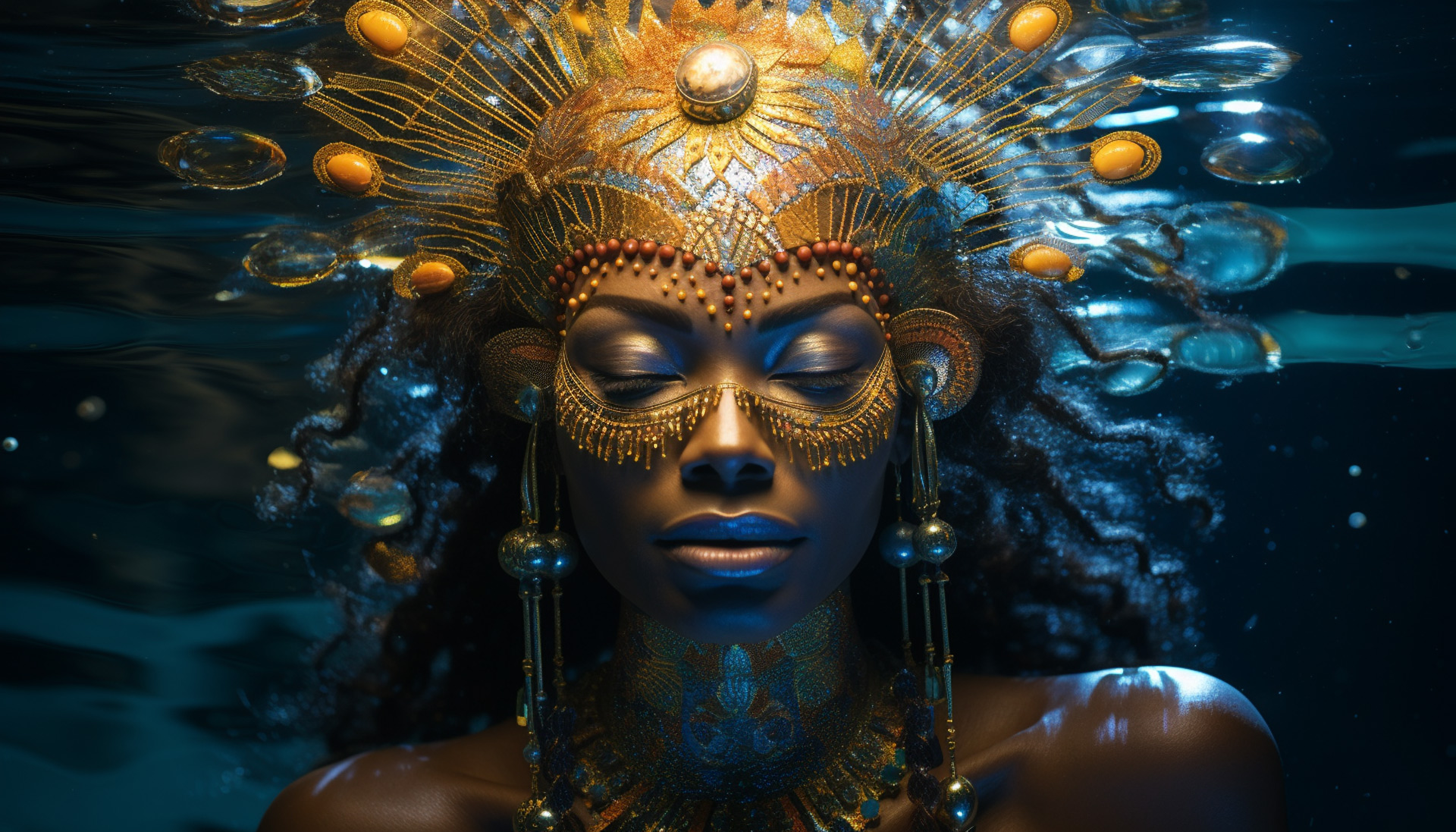Introduction
Have you ever felt the pull of the ocean's mystery, the allure of its hidden depths? In this blog post, we'll dive into the captivating world of African mermaid myths, exploring their profound connection to the cosmos and our own human journey of self-discovery.
Mami Wata: The Cosmic Serpent's Dance
The mesmerizing Mami Wata, a goddess of fortune and chaos, is often depicted as a serpent. But what if this serpent is a reflection of the Milky Way itself, a cosmic dancer representing the eternal cycle of creation and destruction? Her dual nature teaches us that the universe, like ourselves, is both beautiful and terrifying, a constant interplay of opposing forces.
- Lesson: Embrace the duality within yourself and the universe. Recognize that creation and destruction are two sides of the same coin.

Yemoja: Mother of Stars
Yemoja, the Yoruba mother goddess, is associated with the ocean, fertility, and the very birth of the cosmos. Her story of a shattered water pot releasing the Orishas echoes the creation of stars from a primordial sea. Yemoja's essence as the cosmic womb reminds us of the feminine principle of creation and the potential for rebirth that resides within us all.
- Lesson: Embrace the constant flux of the universe and tap into your own creative power to shape your destiny.
The Mermaid's Mirror: Reflections of Heaven
Mermaids, across cultures, are drawn to reflective surfaces. Could this be more than vanity? Perhaps they are mimicking celestial beings who use their combs to shape cosmic order. Their reflections in the water could be a dynamic representation of the ever-changing night sky, a tapestry woven by the stars.
- Lesson: The universe is not a distant, unknowable entity but a reflection of our own curiosity and desire for understanding. We can find order in the chaos by seeking patterns and connections.
Kianda of the Kongo: Lunar Rhythms and Ocean Tides
Kianda, a mermaid figure from Kongo mythology, is deeply connected to the moon and its influence on the tides. Her story reminds us that the celestial bodies don't just affect the physical world but also our emotions, dreams, and cycles of fertility. Just as the moon governs the tides, so too does it influence the ebb and flow of our lives.
- Lesson: Recognize the interconnectedness of the universe and your own internal rhythms. Embrace the cyclical nature of life and the unseen forces that shape us.
When Stars Drowned: Myths of Transformation
In many African myths, celestial beings transform into mermaids upon entering sacred waters. This symbolic "drowning" of stars represents the cycle of death and rebirth that governs the universe. It reminds us that endings are not final but are opportunities for transformation and renewal.
- Lesson: Embrace change as a natural part of life. Let go of old identities and embrace the potential for rebirth.

Conclusion
The African mermaid myths are not just stories of mythical creatures but a reflection of our deep connection to the cosmos. They teach us about the duality of existence, the power of creation and destruction, the interconnectedness of all things, and the importance of embracing change.
As you gaze up at the night sky, remember that the stars you see are not just distant points of light but a reflection of the endless potential that resides within you. Like the mermaid, you are a part of the cosmic dance, eternally transforming and evolving. Embrace the mystery, embrace the change, and let the wisdom of these ancient myths guide you on your own journey of self-discovery.
